Forget tiny, delicate grasshoppers hopping through fields. Imagine a massive, emerald-colored insect hiding in plain sight amongst the leaves!
This is the lubber grasshopper, an amazing creature that stands out not just for its size, but for its cool abilities. It might not be a ballerina, but it’s definitely a master of disguise and survival.
In this article, we’ll take a closer look at the lubber grasshopper. We’ll see how it starts life as a tiny nymph, then grows into a colorful adult.
We’ll discover why it blends in so well with its surroundings, how it protects itself from harm, and why it’s important for the environment.
Remember, understanding animals helps us appreciate them more. So, let’s explore the amazing world of the lubber grasshopper with curiosity and a desire to learn!
1. What is a Lubber Grasshopper?
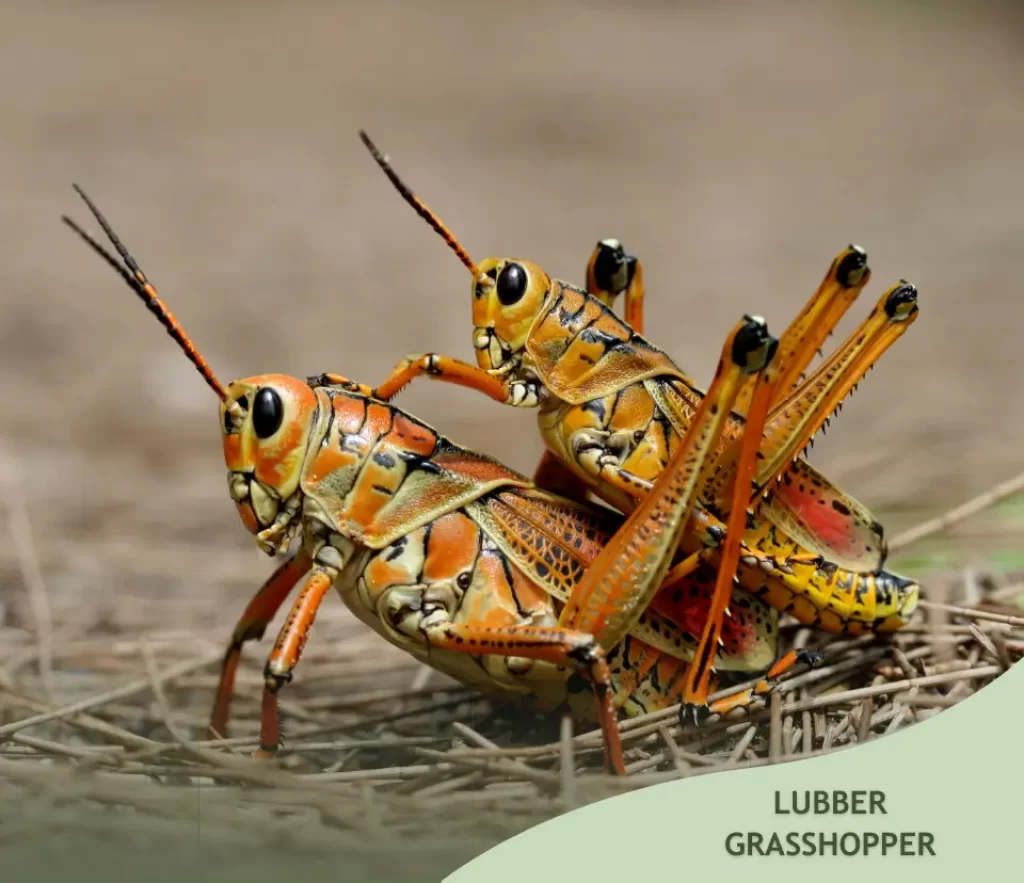
The Lubber Grasshopper (Romalea microptera) is the largest grasshopper species in North America, earning its nickname “giant grasshopper” or “buffalo locust.”
These heavyweights can reach truly impressive sizes, with males growing up to 4.3-5.5 inches (11-14 cm) long and females reaching a staggering 5-7 inches (12.5-17.5 cm)! They are typically green or brown in color, with darker markings on their wings and bodies.
Physical Appearance
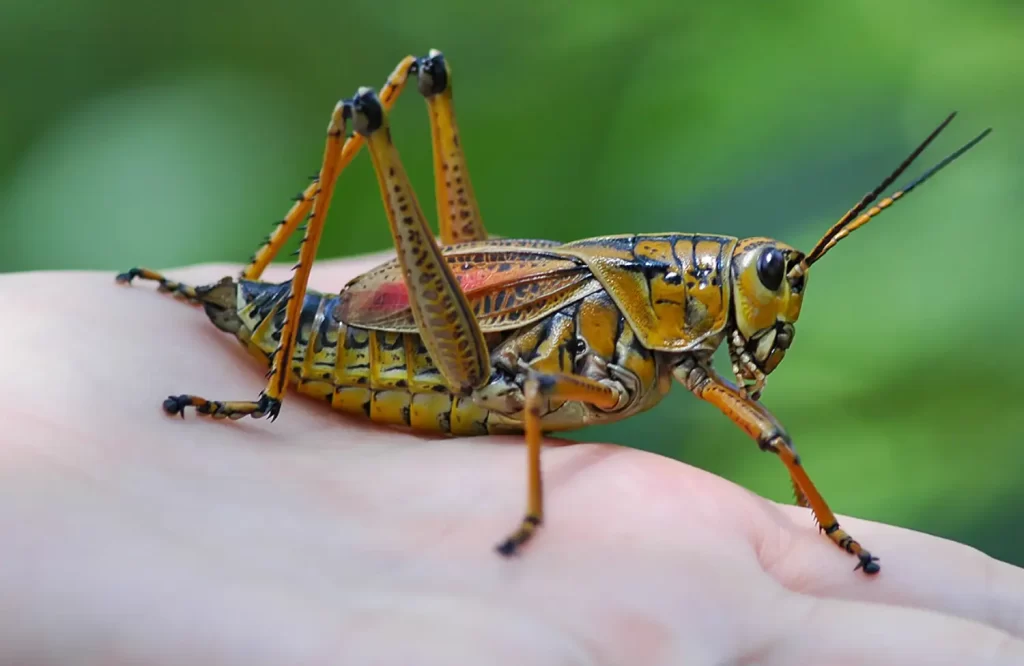
Imagine a grasshopper dressed for a tropical carnival. Lubber grasshoppers come in a variety of colors, with females typically sporting a flashy yellow and black striped pattern, while males tend to be more subdued, sporting a brownish-gray hue.
Both sexes have prominent horn-like projections on their heads, adding to their unique appearance.
- Size: The largest grasshopper species in North America, with females reaching a whopping 5-7 cm (2-2.8 inches) in length and males slightly smaller at 4.3-5.5 cm (1.7-2.2 inches).
- Color: Females typically sport a vibrant yellow-green coloration with black markings, while males are mostly black with yellow stripes.
- Body: They have a stout, robust body with powerful hind legs for jumping and strong mandibles for chewing.
- Wings: Interestingly, their wings are relatively small and underdeveloped, making them poor fliers.
Habitat and Distribution
Lubber grasshoppers aren’t exactly globe-trotters. They prefer the warm and humid climate of the southeastern United States, particularly Florida and the coastal plain along the Atlantic and Gulf coasts. You’ll find them munching on leaves in hammocks, swamps, and other moist, vegetated areas.
Biology and Behavior
Despite their size, Lubber grasshoppers are relatively slow-moving and peaceful creatures. They spend their days munching on a variety of leaves, including oak, hibiscus, and even citrus trees. Interestingly, females lay their eggs underground in large pods containing up to 200 eggs! After hatching, the nymphs undergo several molts before reaching adulthood around 3-4 months later.
Lubber grasshoppers have a few interesting defense mechanisms. When threatened, they can release a foul-smelling liquid and hiss loudly.
They can also inflate their bodies with air to appear larger and more intimidating. However, their most effective defense is often their camouflage, as their coloration helps them blend in with their surroundings.
Species Varieties
While the impressive Lubber Grasshopper (Romalea microptera) reigns supreme as the largest grasshopper in North America, it’s not the only one in its genus! Let’s takea looh at the Lubber Grasshoppers and explore their unique characteristics:
1. Eastern Lubber Grasshopper (Romalea microptera):
This is the classic Lubber Grasshopper we discussed earlier. Their vibrant yellow and black female and brownish-gray male patterns are unmistakable. They’re primarily found in Florida and the southeastern coastal plain.
2. Western Horse Lubber Grasshopper (Taeniopoda eques):
This species lives up to its name! Found in the southwestern United States and Mexico, they are the second-largest Lubber Grasshopper, reaching up to 5 inches (12.7 cm). Their distinguishing feature is a prominent spine-like projection on their thorax, resembling a horse’s saddle. Females are typically brown with yellow markings, while males are a darker brown.
3. Florida Scrub Lubber Grasshopper (Romalea guttata):
This smaller Lubber Grasshopper (around 2.5 inches or 6.4 cm) resides in scrub oak habitats in Florida and Georgia. Their coloration is more muted compared to other species, with brown and green tones and fewer markings. Interestingly, they exhibit a unique behavior called “wing-flicking,” where they rapidly vibrate their wings to deter predators.
4. Central American Lubber Grasshopper (Romalea gigantea):
Found in Central America, this species is comparable in size to the Eastern Lubber Grasshopper. However, they have a more elongated body and distinct markings on their hind legs. Females are typically brown with yellow markings, while males are a darker brown with yellow stripes.
5. Cuban Lubber Grasshopper (Romalea brunnea):
As the name suggests, this species is endemic to Cuba. They are similar in size to the Eastern Lubber Grasshopper but have a more uniform brown coloration with fewer markings.
Observation: These are just a few of the fascinating Lubber Grasshopper species out there. Each one has its own unique characteristics and contributes to the diversity of this remarkable insect group!
2. Life Cycle of The Lubber Grasshopper (From Egg to Giant Hopper)
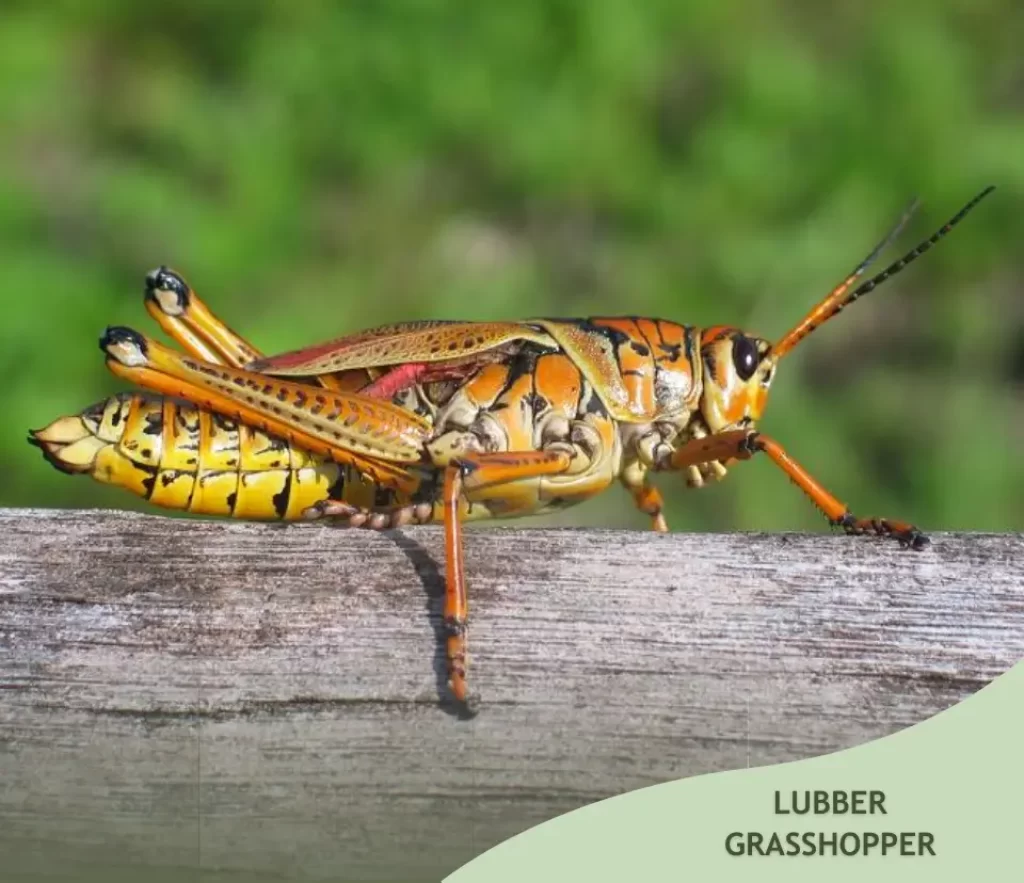
The Lubber Grasshopper, despite its intimidating size, undergoes a fascinating metamorphosis process from egg to adult. This journey takes approximately 45 days under ideal conditions, with each stage playing a crucial role in their development.
Stage 1: The Egg:
- The female lays clutches of 200-300 eggs underground in late summer or early fall.
- These eggs are brown, oval-shaped, and about 1/4 inch long.
- They remain dormant throughout winter, protected from harsh weather conditions.
- Environmental factors like temperature and moisture significantly impact hatching success. Warmer temperatures and moderate moisture promote earlier and more synchronized hatching.
Stage 2: The Nymph (1st Instar):
- In spring, when soil temperatures reach around 70°F (21°C), the eggs hatch, releasing tiny, wingless nymphs.
- These black nymphs with yellow or red stripes are only about 1/4 inch long.
- They immediately begin feeding on tender leaves, primarily from oak, hibiscus, and citrus trees.
- During this stage, they are most vulnerable to predators like birds, reptiles, and amphibians.
Stage 3-6: The Growing Nymphs (2nd-5th Instars):
- Over the next 3-4 months, the nymphs undergo several molts, shedding their exoskeleton to accommodate their growth.
- With each molt, they increase in size and develop more adult features.
- Females tend to grow faster and larger than males during this stage.
- Environmental factors like food availability and temperature can impact the duration of each instar.
Stage 7: The Adult:
- After the final molt, the nymphs emerge as fully mature adults.
- Females reach an impressive size of up to 6 inches, while males are slightly smaller at around 4-5 inches.
- Adults develop wings, but they are flightless and rely on their powerful legs for locomotion.
- The adults are typically active during the day, feeding and mating.
Factors Affecting Development
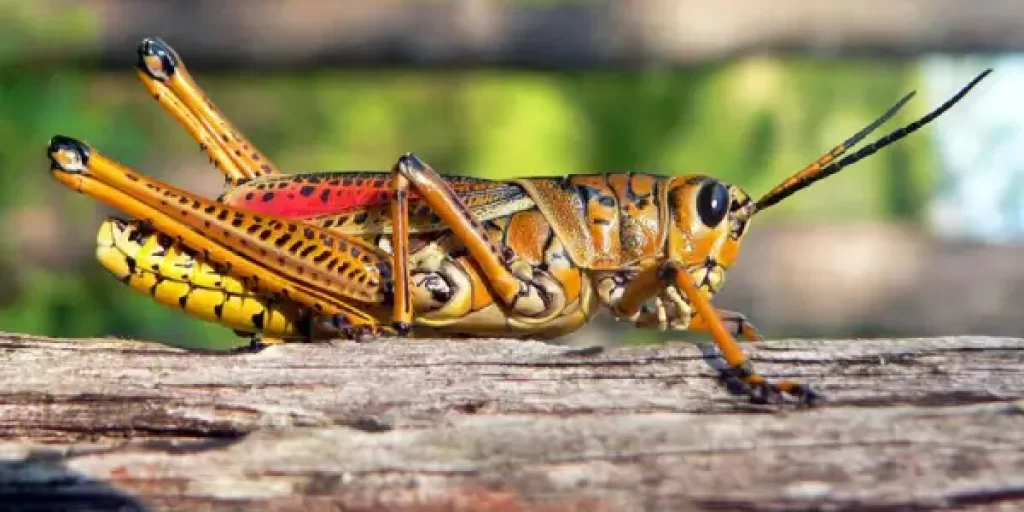
Temperature: Warmer temperatures generally accelerate development, while cooler temperatures slow it down. However, extreme temperatures can be detrimental.
Food Availability: Adequate access to nutritious leaves is crucial for proper growth and development. Nutritional deficiencies can lead to stunted growth and delayed development.
Predation: The presence of predators can influence nymph behavior, leading them to spend more time hiding and less time feeding, potentially impacting their development.
Moisture: While dry conditions can hinder hatching success, excessive moisture can create favorable conditions for fungal diseases that can harm the eggs and nymphs.
Each stage plays a vital role in their survival and ultimately contributes to the continuation of this fascinating insect species.
Interested in what animals mean spiritually? Check out the Lubber Grasshopper’s special meaning. Learn more at Grasshopper Spiritual Meaning for quick, easy insights.
3. Habitat and Diet
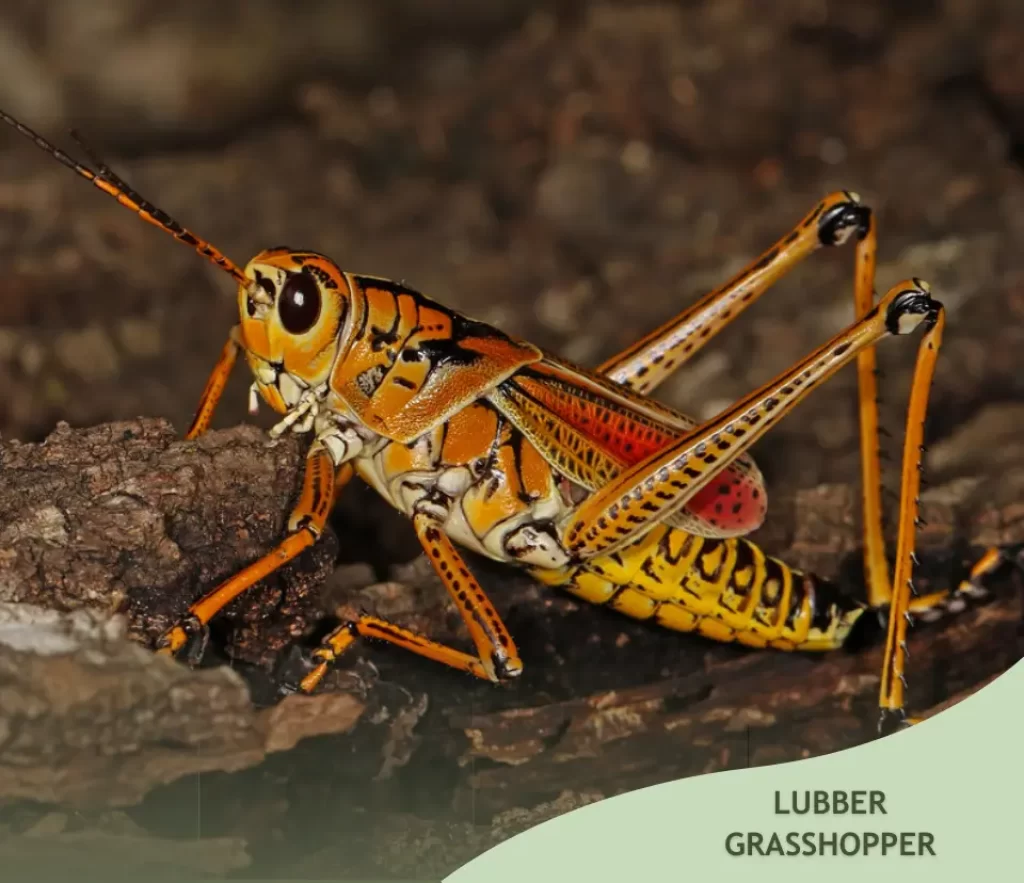
Lubber grasshoppers, despite their size, exhibit remarkable ecological specialization within their preferred humid and warm environments.
Found primarily in the southeastern United States, particularly Florida and the coastal plains, these herbivores occupy various vegetated areas like hammocks, swamps, and woodlands, displaying a strong relationship with their habitat.
Each species showcases distinct habitat preferences: Eastern and Florida Scrub Lubbers favor oak woodlands, Western Horse Lubbers inhabit grasslands and oak woods, Central American Lubbers reside in rainforests, and Cuban Lubbers call coastal scrub and dry forests home.
Their cryptic coloration seamlessly blends with their surroundings, offering crucial camouflage from avian and reptilian predators.
As primary consumers, Lubber grasshoppers play a significant role in regulating plant populations and contributing to decomposition.
Their diet primarily consists of broadleaf plants, with oak leaves being a favorite. They exhibit dietary flexibility, adapting to available food sources like hibiscus and citrus depending on their specific habitat.
Their powerful jaws and efficient digestive systems, aided by gut bacteria, enable them to break down tough plant material, contributing to the nutrient cycle.
4. Adaptations and Defense Mechanisms
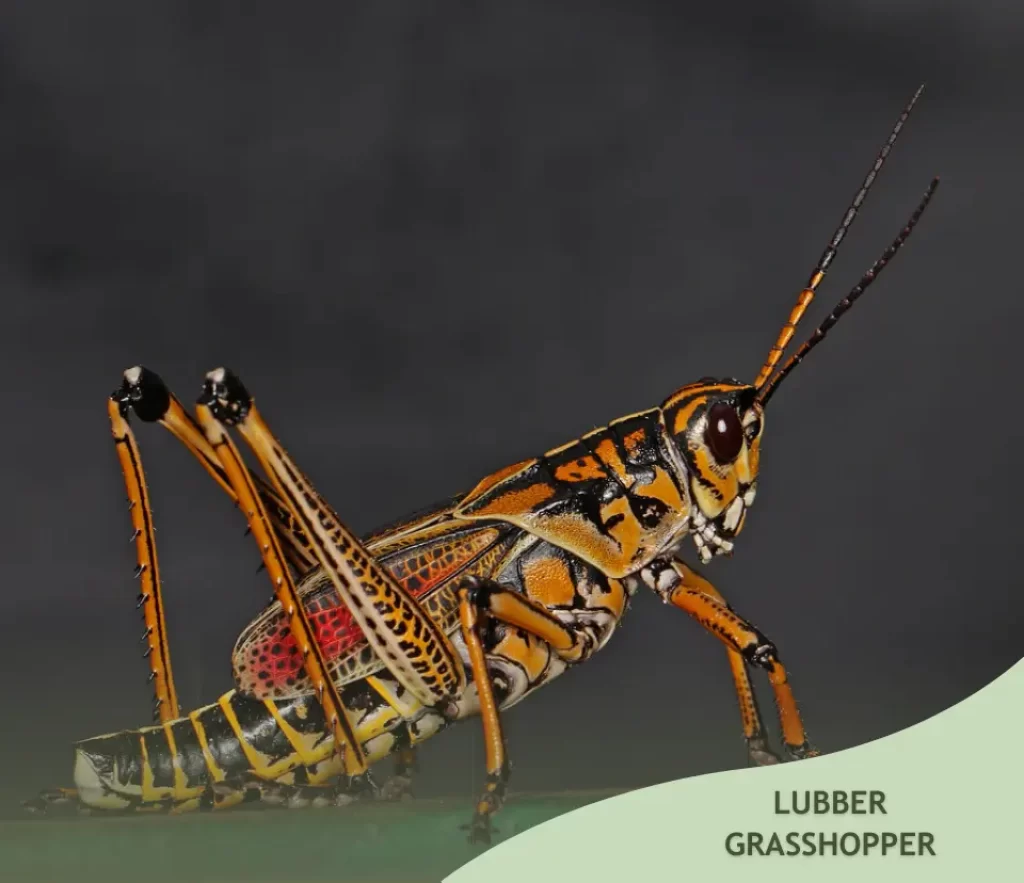
Despite their impressive size, Lubber grasshoppers (Romalea spp.) navigate a world teeming with potential predators. However, these gentle giants are far from defenseless. They exhibit a remarkable array of adaptive strategies, enabling them to thrive in their humid, vegetated habitats across the southeastern United States.
Cryptic Coloration: Their primary line of defense lies in their cryptic coloration. Browns, yellows, and greens seamlessly blend with their leafy surroundings, rendering them practically invisible to avian and reptilian predators. This camouflage strategy, honed over generations, exemplifies evolution’s power in shaping effective defense mechanisms.
Chemical Deterrence: When camouflage fails, Lubber grasshoppers deploy a pungent chemical weapon. They release a noxious concoction of digestive juices and waste products, deterring attackers with its unpleasant odor. This defensive secretion serves as a chemical repellent, highlighting the diverse adaptations employed by these fascinating insects.
Inflatable Displays and Deceptive Hissing: Feeling further threatened, Lubber grasshoppers can inflate their bodies with air, transforming into puffed-up green balloons. This impressive visual display, accompanied by a loud hissing sound, mimics the threat of a larger creature. This startle response often confuses predators, providing precious moments for escape.
Agile Movement: Despite lacking wings, Lubber grasshoppers possess remarkable agility thanks to their powerful legs. These propulsive appendages enable them to leap away from danger with surprising speed, leaving predators behind in a flurry of leaves. This locomotor adaptation underscores their ability to navigate their environment effectively.
Collective Security: Certain Lubber grasshopper species, like the Cuban Lubber, leverage the power of numbers. They congregate in large groups, creating a visually overwhelming mass that confuses predators and makes it difficult to target individual grasshoppers. This aggregation behavior exemplifies the diverse strategies utilized by these insects to ensure their survival.
Nocturnal Activity: In predator-rich environments, Lubber grasshoppers exhibit remarkable flexibility. They shift their feeding habits, becoming nocturnal to avoid peak predator activity. This behavioral adaptation highlights their ability to adjust their behavior based on environmental pressures.
Mimicry for Enhanced Protection: The Western Horse Lubber grasshopper utilizes a sophisticated form of mimicry. Its spiky body closely resembles the dangerous saddleback caterpillar, a known predator. This visual mimicry serves as a potent warning to potential attackers, dissuading them from attempting to consume the grasshopper.
Natural Armor: Evolution has equipped Lubber grasshoppers with a natural suit of armor. Their tough exoskeletons offer protection against smaller predators and bites. This physical adaptation further contributes to their resilience in their natural habitat.
Aposematic Coloration: Not all Lubber grasshoppers rely solely on camouflage. Some species sport bright and contrasting colors, employing aposematic coloration. These vibrant hues serve as a clear warning to predators, indicating that the grasshopper is unpalatable or even toxic. This bold strategy deters attacks and ensures the insect’s survival.
Cultural and Historical Significance
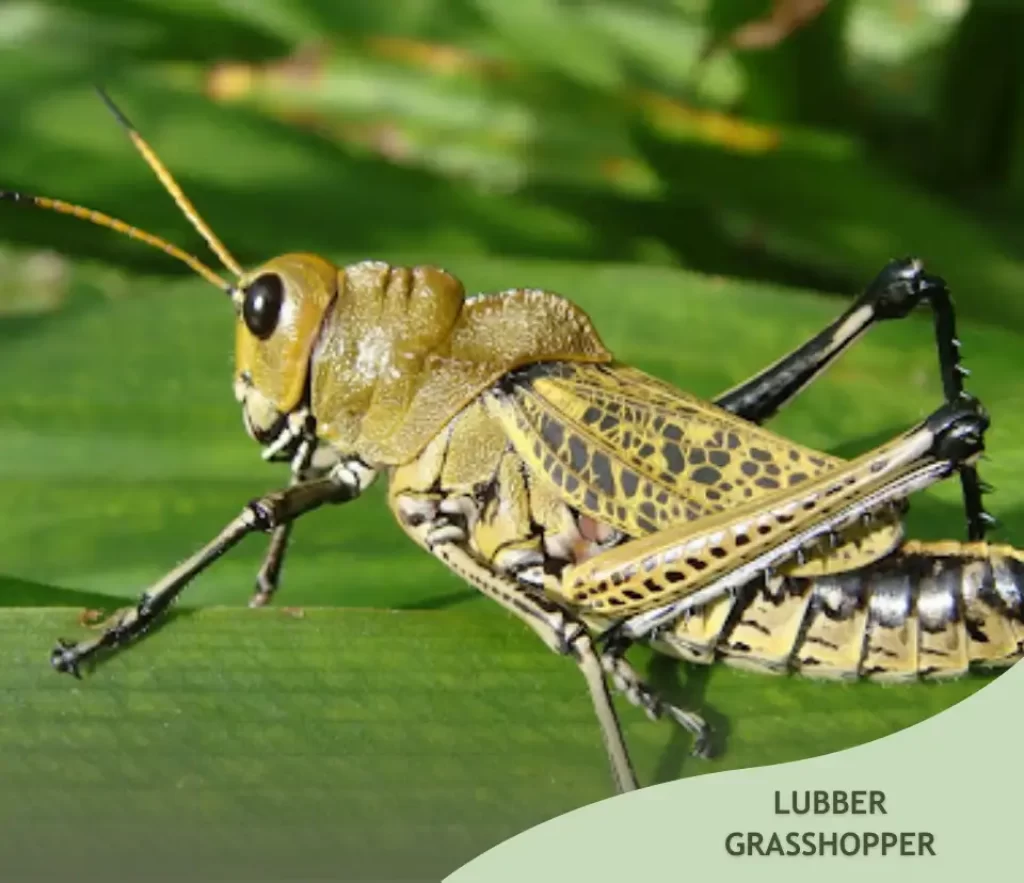
In the diverse folklore of the southeastern U.S., the Lubber Grasshopper garners attention not just for its substantial size and vivid coloring, but also for the quaint nicknames it’s earned— “potato bugs” or “cottonhead hoppers.” These names stem from its perceived resemblance to other insects, embedding it deeper into the local cultural fabric.
Venturing into Scotland, we encounter a more mystical aspect of grasshopper lore with the legend of Maggy Moulach, a shapeshifting household spirit believed to occasionally take the form of a grasshopper. While this tale doesn’t specifically mention Lubber Grasshoppers, it underscores the rich tapestry of stories surrounding these insects worldwide.
Historically, Lubber Grasshoppers have been cast as villains in the agricultural saga, notorious for their appetite for oak and citrus leaves. However, their unique aesthetic appeal has also captured the hearts of exotic pet enthusiasts, leading to a nuanced view of these creatures in recent years.


